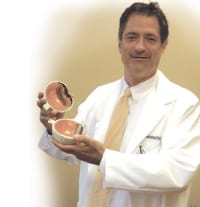Senior Moments A Decade of Change in Health Care Services for the Elderly
The 10 years that the Healthcare News has been in circulation may seem like a blink of the eye to some. When one looks at the changes that have occurred in health care, however, it certainly seems like much longer than a decade. Nowhere is that more evident than in health care services for the elderly.
Ten years ago, the 65+ population was 12{06cf2b9696b159f874511d23dbc893eb1ac83014175ed30550cfff22781411e5} of all Americans. Today it is well on the way to becoming 20{06cf2b9696b159f874511d23dbc893eb1ac83014175ed30550cfff22781411e5}. The increase in the number of those 85+ is even more astounding, growing from 3.8 million people 10 years ago to a projected 9.6 million in 2030. So, one of the biggest changes in the past decade is sheer numbers, which are still on the way up.
Besides the increase in the numbers of people needing elder care, there have been several other transformations, including technology, a shift in service delivery, changes in payment methodology, and culture change. They have all had a significant impact.
Technology is leaving its indelible mark on elder care just as it is revolutionizing every other field. Visiting nurses carry laptops and computer tablets at the bedside in nursing homes and hospitals, meaning that caregivers have information at the tips of their fingers that didn’t exist 10 years ago. Telehealth machines in individuals’ homes now allow homebound elders to have vital signs monitored 24 hours a day, 7 days a week. Nursing homes and certified home health agencies transmit data on residents that is entered into a national database for measuring quality and driving quality improvement.
Emerging technology is providing ways for elders to have more independence, choice, and control, providing self-mobility, medication reminders, and assistive home devices. In one care setting, residents paralyzed with Lou Gehrig’s disease can blink their eyes to turn on lights, open and close windows, and perform everyday tasks by themselves. In another, sensors detect the risk of falling and summon help. This is just a sample of the multitude of aids that existed only in the imagination a decade ago.
A shift in service delivery magnifies another trend that was much less evident in the year 2000. More people are staying home longer, there is a decline in institutional care, and people spend fewer days in the hospital. Care is shifted from more-expensive hospitals to nursing-home rehabilitation settings; from nursing homes to assisted living; and from assisted living to independent-living settings with home-care services. To use nursing-home utilization as an example, the number per 1,000 people age 75+ fell 20{06cf2b9696b159f874511d23dbc893eb1ac83014175ed30550cfff22781411e5} in the past decade. Cost is the driving factor, but so is the preference of elders to retain as much independence as they can while they receive the care and services they need.
“Culture change” is a term used to describe the movement of health care for the elderly, primarily nursing-home care, from an institutionally delivered model to one that is home-like and centered on the person being served. Based on a philosophy that emphasizes self-determination and purposeful living for those in long-term-care settings, this movement has seen monumental growth in the past 10 years. Much of that has happened in just the past few years, as the trend has gained momentum.
Positive results are evident in homes that have embraced culture change, and even regulators are supporting it. Nursing homes that are successful with culture change have their operations shaped by the awareness of the needs and preferences of the residents. Residents have greater control over their daily lives, and choice, dignity, and respect have all been hallmarks of this change.
Meanwhile, another significant change from a decade ago is the cost of the services provided, and payment of those costs.
With the cost of health care spiraling out of control, it’s no wonder that payment methodology would come under close scrutiny by payers and consumers alike. Not surprisingly, health care spending for those over 65 is 5.6 times higher than that for children, and over 25{06cf2b9696b159f874511d23dbc893eb1ac83014175ed30550cfff22781411e5} of the Medicare budget is spent on the last year of life. It used to be that payment structures were set up to reimburse providers for whatever it cost to provide care, but significant changes and refinements have occurred over the years. Now, most providers of elder-care services are paid to manage a whole ‘episode’ of care with an all-inclusive payment; this provides incentive to manage the care better and faster and discharge the patient quicker.
Over the past decade, Medicare budgets have become strained to the limit, and payments to providers and physicians have been trimmed. Medicaid has fared even worse; although Medicaid provides services to low-income people of all ages, 70{06cf2b9696b159f874511d23dbc893eb1ac83014175ed30550cfff22781411e5} of its spending is on the elderly and disabled and is thus a target for reduction.
Much of what has changed in the field of elder care mirrors what is happening in all fields, and for people of all ages. However, the elder population has grown faster than the general population since 2000, and will continue to far outpace the general population in the decade to come. Thus, it is of particular interest to note what has changed, and to anticipate more advances in technology, further pressure on payment, continued migration to lower-cost centers of care, and increases in homelike and person-centered models for those in residential settings.
Elders needing health care in the future will continue to demand and to deserve choice, dignity, and self-determination in whatever care setting they are in.
Carol Katz is CEO of Loomis Communities.



Comments are closed.